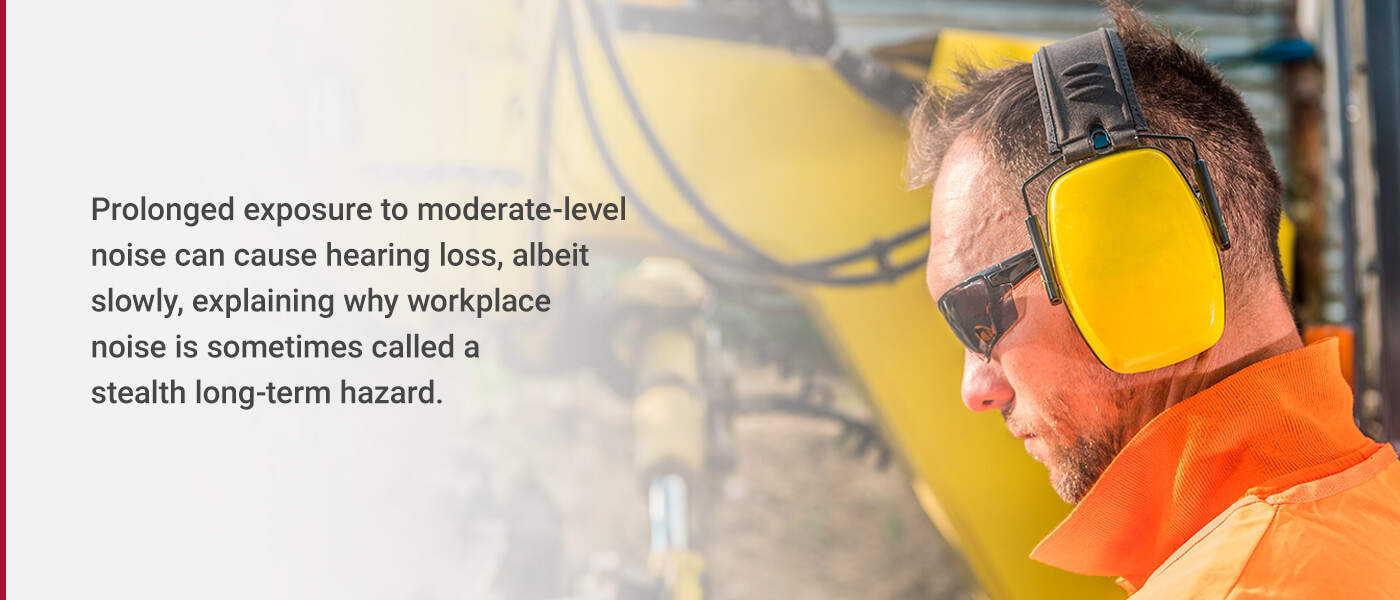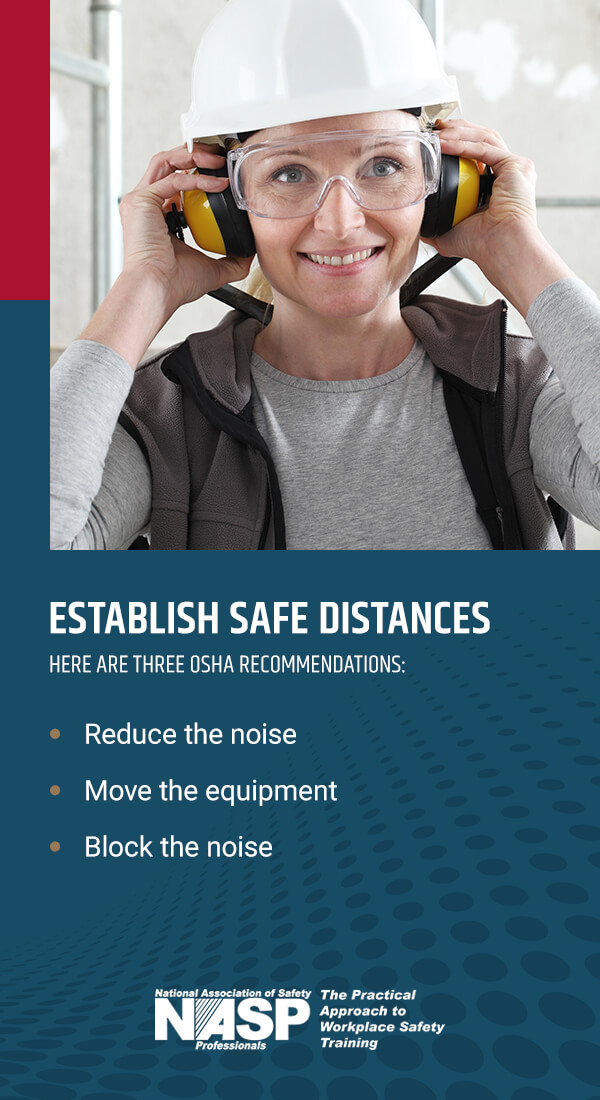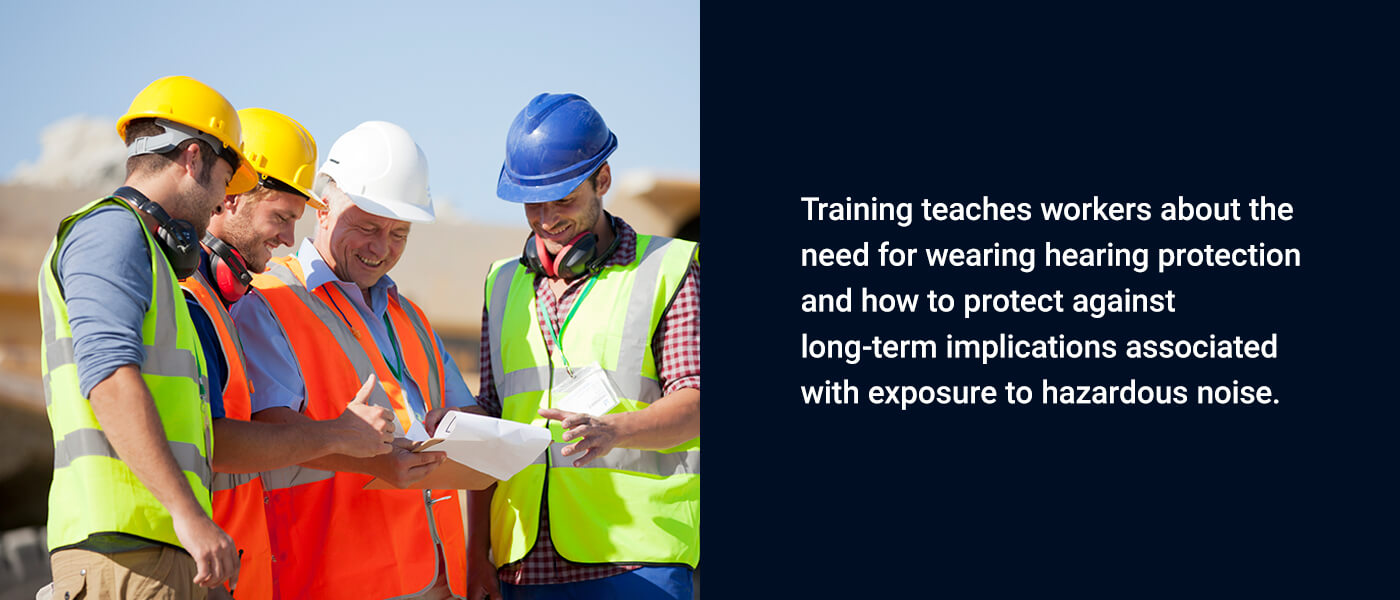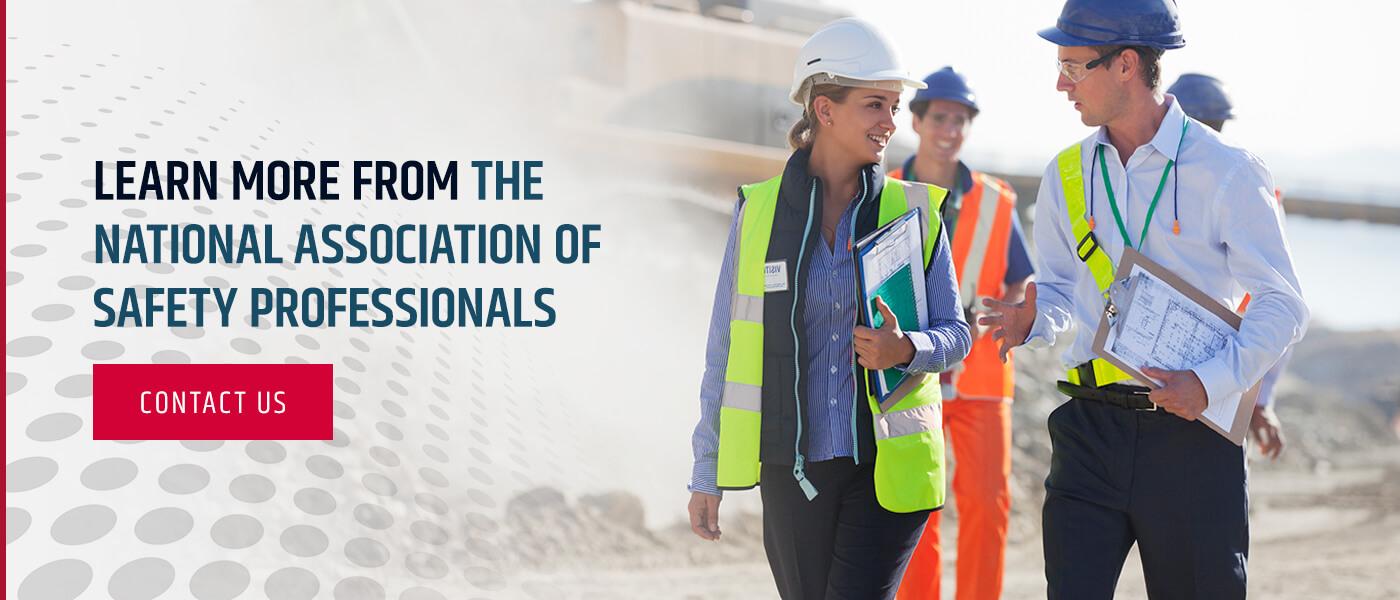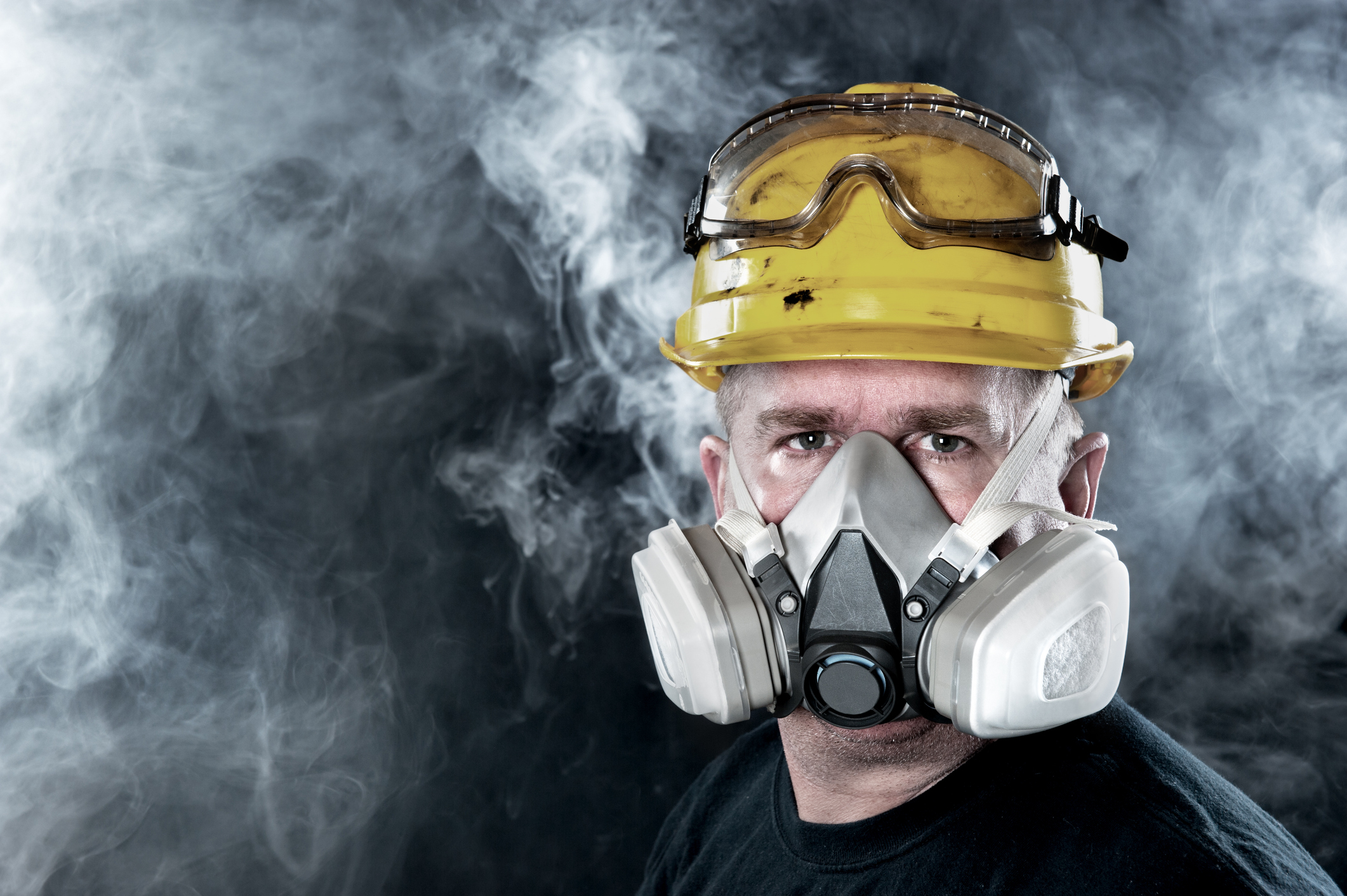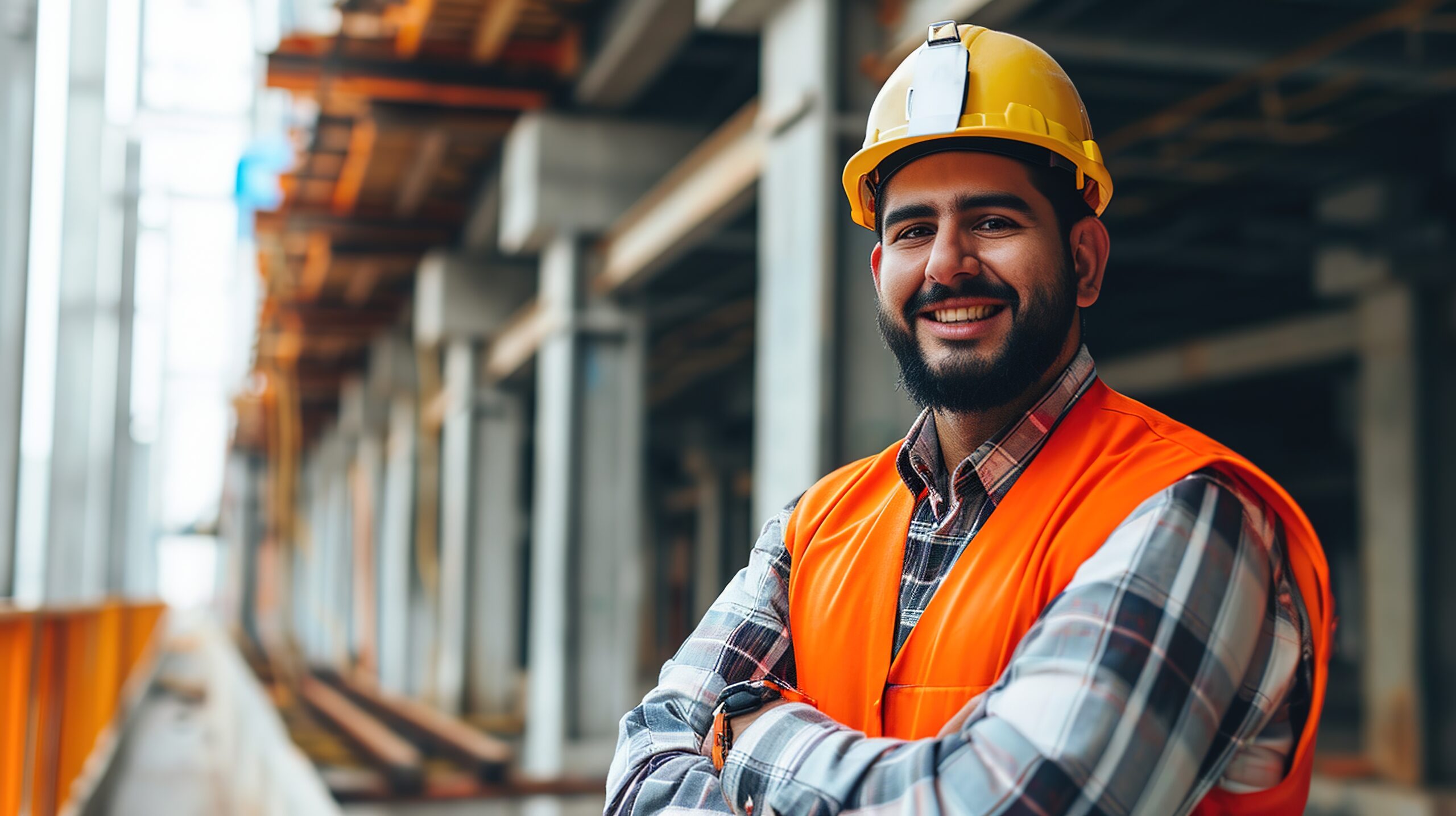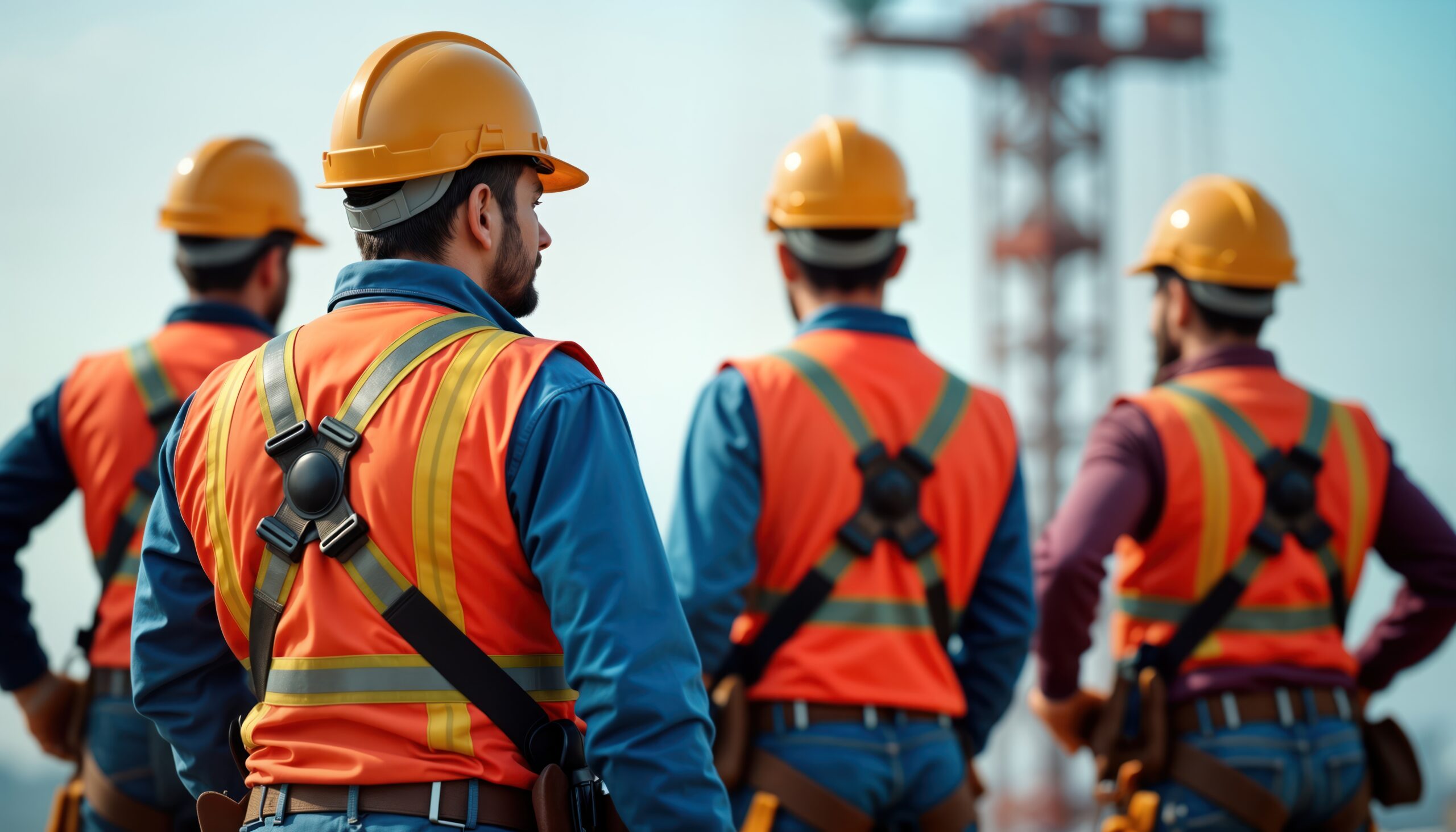Hearing Protection Safety in Construction
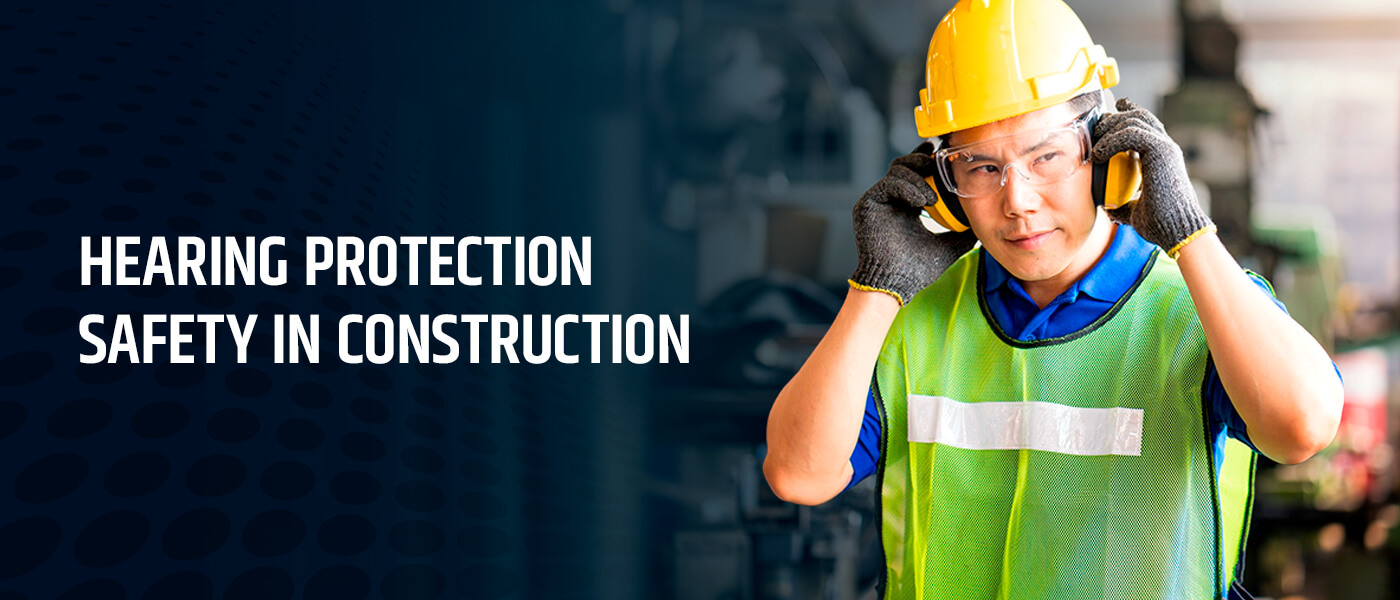
Using hearing protection on construction sites is crucial because it safeguards workers against hearing loss. It can also enhance communication, reduce workplace accidents, and improve job quality. As a safety professional, you must understand the effects of hazardous noise, provide safety systems or work equipment, ensure employees comply with established policies and best practices, and train them to stay safe while performing at the highest level.
Why Is Hearing Protection Important During Construction?
Using ear protection during construction is vital. Here are four adverse effects you can prevent with proper hearing protection:
1. Hearing Loss
Exposure to high levels of noise can cause permanent hearing loss. Permanent hearing loss is irreversible, even with hearing aids or surgery. Permanent hearing loss usually occurs gradually, making it challenging to realize it is happening until it’s too late. However, a single loud noise can also damage the ear enough to cause permanent hearing loss.
Hearing loss can also be temporary, depending on the level and extent of exposure. Some experience conditions like tinnitus or ringing in the ear when exposed to loud noises.
The good news is that hearing loss is preventable. Safety professionals need to understand how these conditions occur and implement measures to safeguard employees. Construction sites usually generate intense noise, so adopting a preventive approach is recommended.
2. Increase in Accidents
Communication is fundamental on construction job sites. It helps workers coordinate and execute the project as required. Communication also reduces accidents during construction, considering that multiple activities usually go on simultaneously. Loud noise can make it challenging to hear warning signals, leading to more accidents at the work site. Ultimately, noise limits your workers’ ability to hear high frequencies, understand speech, and communicate effectively.
3. Social Isolation
The effect of hearing damage can transcend beyond the construction site. When communication is limited, a worker’s ability to interact with others is restrained, which can affect their quality of life. It makes socializing with friends and family or participating in usual activities challenging.
4. Decrease in Productivity
Intense noise can reduce focus. It causes distraction which can decrease productivity and job quality. The construction industry requires attention to detail, making it essential to ensure all workers are adequately prepped and well-equipped to perform optimally.
What Causes Construction Workers’ Hearing Loss?
A single exposure to sudden intense noise like an explosion can damage hearing instantly. Also, exposure to noise over extended durations, usually on construction sites, can lead to gradual yet permanent hearing loss.
Hearing loss can occur at the levels of an electric drill running for eight hours. Initially, the loss may be temporary. As the exposure continues, the loss of hearing can become permanent. Prolonged exposure to moderate-level noise can cause hearing loss, albeit slowly, explaining why workplace noise is sometimes called a stealth long-term hazard.
Hearing impairments occur when the cilia in the ear are damaged, causing speech to be muffled or distorted.
Hazardous chemicals combined with lower sound levels can also cause hearing loss. According to the Centers for Disease Control and Prevention (CDC), ototoxicity is when chemical substances affect the hearing or auditory system. Examples of ototoxic substances include the following:
- Nitriles: Nitriles like cis-2-pentenenitrile, acrylonitrile, and butenenitrile can cause hearing loss.
- Solvents: These include xylene, styrene, and toluene, which are often found in degreasers, thinners, and paint.
- Pesticides: Pyrethroids, paraquat, hexachlorobenzene, organophosphates and other pesticides can affect hearing.
- Asphyxiants: These include hydrogen cyanide, carbon monoxide, and tobacco smoke.
- Pharmaceuticals: Nonsteroidal anti-inflammatory drugs (NSAIDs), loop diuretics, and aspirin can affect hearing.
- Metals and metallic compounds: Exposure to organic tin compounds, mercury compounds, and lead can cause hearing loss.
Research shows that about half of all construction workers have been exposed to hazardous noise, with 52% of those not wearing hearing protection. Additionally, about 7% of construction workers have tinnitus, while 25% have a material hearing impairment.
What Are the Common Noises on Construction Sites?
Construction workers are exposed to a wide variety of hazardous noises, which usually arise from the use of equipment and machines such as the following:
- Trucks
- Cranes
- Forklifts
- Graders
- Bulldozers
- Excavators
- Compactors
- Electric saws
- Cement mixers
- Welding machines
- Jackhammers and sledgehammers
Explosions and demolition activities can also cause noise on construction sites.
How Do You Prevent Hearing Loss in Construction?
Here are nine hearing safety tips to help you and your workers prevent hearing loss at your construction sites:
1. Know the Limit
Noise is measured in units of sound pressure level called decibels (dB). The louder the noise, the higher the decibels. Decibels may be expressed as A-weighted sound levels or decibels A (dBA), which provides a more specific measurement and accounts for the relative loudness of sound as perceived by the human ear.
The Occupational Safety and Health Administration (OSHA) specifies how much noise employees can be exposed to. This is called the permissible exposure limit (PEL). OSHA’s PEL is 90 dBA for workers over an eight-hour workday. At that level, employees must wear hearing protection. The CDC provides a chart detailing some familiar sources of noise and decibel levels.
For every 5 dBA above the PEL, the duration of the employee’s exposure to noise must be reduced by half. For example, while an employee can operate in a 90-dBA environment for eight hours, they can only work in a 95-dBA surrounding for four hours. For a 100-dBA environment, the limit is two hours. An employee’s maximum exposure, or ceiling, to noise must not exceed 140 dBA for sudden noise or 115 dBA for continuous noise.
Employees should avoid working in environments with noise levels above 85 dBA without protection. OSHA also recommends what is known as the 2-3-foot rule, which states that if you need to raise your voice when speaking to someone 2 or 3 feet away, the noise level might be over 85 dBA.
Modern technology allows employers and safety professionals to measure the noise level on job sites. A classic example is the sound level meter app from the National Institute for Occupational Safety and Health (NIOSH). You can also use the following devices to measure sound levels on construction sites:
- Sound level meter: Safety and health inspectors may measure sound or noise levels with a sound level meter, which has a microphone positioned at the user’s ear level. The device detects the sound level of equipment, then the inspector labels it with a hazardous noise sticker if needed.
- Noise dosimeter: Noise dosimeters are specialized sound level meters designed to measure a person’s noise exposure over time. It helps safety professionals comply with OSHA regulations.
2. Use Appropriate Tools and Equipment
Provide hearing protection for construction projects and ensure workers use them if the PEL is exceeded. A second layer of hearing protection may be necessary in certain instances, like wearing earmuffs over ear plugs. Also, once engineering controls are in place, you can use personal protective equipment (PPE) to provide an extra layer of protection between workers and hazardous noise.
The best hearing protection for construction streamlines operations. Technology enables workers to protect themselves and communicate with co-workers simultaneously. This improves awareness, which can reduce accidents and enhance the quality of work. Safety inspectors and supervisors should walk around the construction site and ensure workers wear their hearing protection when necessary.
When choosing ear protection for construction, consider the noise reduction rating (NRR). An NRR measures the device’s effectiveness in reducing noise levels. The higher the value, the better it is at reducing noise. NRR values can range up to approximately 33 dB.
Here are some examples of the various hearing protections you can use for construction:
Earplugs
Earplugs block the ear canal. They are small, easy to carry, and comfortable in humid or hot environments. Earplugs can be made from several materials, including plastic, rubber, expandable foam, or pre-molded using silicone.
Earplugs can provide a high NRR of up to 33 dB. They are affordable and compatible with other PPEs, including glasses, goggles, and hard hats. Earplugs are reusable but should be cleaned regularly for optimum hygiene.
Earmuffs
Earmuffs offer protection by covering the canal or the entire ear. They are generally comfortable but are best used for relatively short periods. Also, combining with other PPEs takes some getting used to. Earmuffs are easy to use but may be less portable and heavier than earplugs. However, they are less likely to be misplaced. The NRR can be up to 31 dB.
Canal Caps
Canal caps have rounded heads that cover the entrance to the ear canal. They are a hybrid between earmuffs and earplugs. They have flexible plastic or metallic bands with earplug tips made of a formable or pre-molded material. Canal caps may have bands that you can wear over the head, under the chin, or behind the neck. Newer models have jointed bands that increase their ability to seal the earplug properly. Canal caps can have an NRR of up to 25 dB.
3. Establish Safe Distances
Establish distance controls to minimize hazardous noises and create an overall quieter environment. Safe distancing protects workers from hearing loss and improves communication on the job site. Here are three OSHA recommendations:
- Reduce the noise: Equipment and machinery are the primary cause of hazardous noise on job sites. Thus, to reduce noise, use the quietest models available. For example, you can use smaller, quieter generators if they can perform the task.
- Move the equipment: The farther away a machine is, the less noise you can hear. Use extension cords, air hoses, and additional welding leads to move equipment farther away if you can. Position generators and other loud equipment farther from workers or face them where there’s less human activity.
- Block the noise: You can build a temporary barrier with plywood or other on-site materials to block the noise from reaching the workers. For example, you can add a fire-resistant acoustical absorbing material or foam inside a five-sided, oversized wooden box and place it over a generator. You could also set the generator on softer soil or sand surfaces to help absorb some of the noise.
4. Plan Ahead
Planning for potential exposure before starting construction activities helps prevent hearing loss. Ensure you are aware of the noise machines are likely to generate and the measures you can implement to address the exposure. Planning enables you to schedule noisy activities and obtain the materials needed ahead of time.
Supervisors and safety inspectors can hold scheduled meetings with workers to discuss approaches to limiting hazardous noise on the construction site and prepare them for the tasks ahead. You can describe the planned tasks for the day or week, depending on the complexity of the job.
5. Maintain Your Equipment
Older and weak machinery tends to generate the most noise, so always ensure they are in peak condition. Change seals, lubricate parts, replace faulty components, install mufflers, and use sharp blades and bits for all operations. Conducting regular, preventive maintenance also increases the life span of your equipment.
6. Conduct Regular Hearing Screenings
Hearing loss usually occurs gradually, making it challenging to detect until it worsens. Conducting routine checks helps you see minor shifts in hearing ability early and implement immediate solutions. Employers and safety officials can arrange meetings with audiologists to conduct hearing screenings within periods recommended by health experts. You can use the initial test as a reference to assess the effectiveness of your safety program.
Common symptoms of hearing loss include ringing in the ears, trouble hearing high-pitched sounds, and difficulty understanding conversations over the phone. Generally, your hearing ability drops. If sudden hearing loss occurs in one or both ears, seek medical assistance immediately.
7. Create a Hearing Conservation Program
OSHA requires employers to implement a hearing conservation program when noise exposure reaches 85 dBA over eight working hours or an eight-hour time-weighted average (TWA). The aim is to prevent initial occupational hearing loss, protect hearing, and equip employees with the requisite knowledge and devices for optimum safety. Employers must measure and monitor noise levels, provide hearing protection, train workers, and conduct free annual hearing screening and evaluation.
8. Eliminate or Substitute Ototoxic Chemicals When Possible
Assess the risks of using ototoxic chemicals and determine whether they are vital for the job. Conducting risk assessments lets you make informed decisions by eliminating unnecessary chemicals from the job site or substituting them with less harmful substances. For example, you can replace a gasoline-powered generator with a portable electric version if it can achieve the same results. This switch reduces exposure to carbon monoxide and toluene. It’s also crucial to train the procurement department to identify potentially ototoxic chemicals when purchasing.
9. Train Your Workers
Quality, regular training programs are inevitable if you want to protect your employees and stay compliant. Besides providing hearing protection, employers and safety professionals must train workers to wear protective gear properly. Training teaches workers about the need for wearing hearing protection and how to protect against long-term implications associated with exposure to hazardous noise.
Educating and training workers also helps them understand that workplace noise can also be a safety hazard. It hinders communication and makes workers less aware of their surroundings. Having good auditory systems can help workers detect machines moving toward them quickly.
Most importantly, safety professionals should undertake training programs and certifications to acquire the knowledge to keep workers safe. It allows you to develop adequate administrative and engineering controls and helps you supervise workers more efficiently.
Learn More from the National Association of Safety Professionals
The National Association of Safety Professionals (NASP) offers workplace training for safety professionals in the construction industry. Our programs aim to improve safety and help you stay compliant. Our IACET-accredited courses include professional certificates, classroom training, online courses, site-specific training, and a wide array of safety and environmental consulting services. Contact us now to learn more!
Purchase Our Certified Safety Manager (CSM) Course
Blog Posts
Latest Posts
Related Posts


